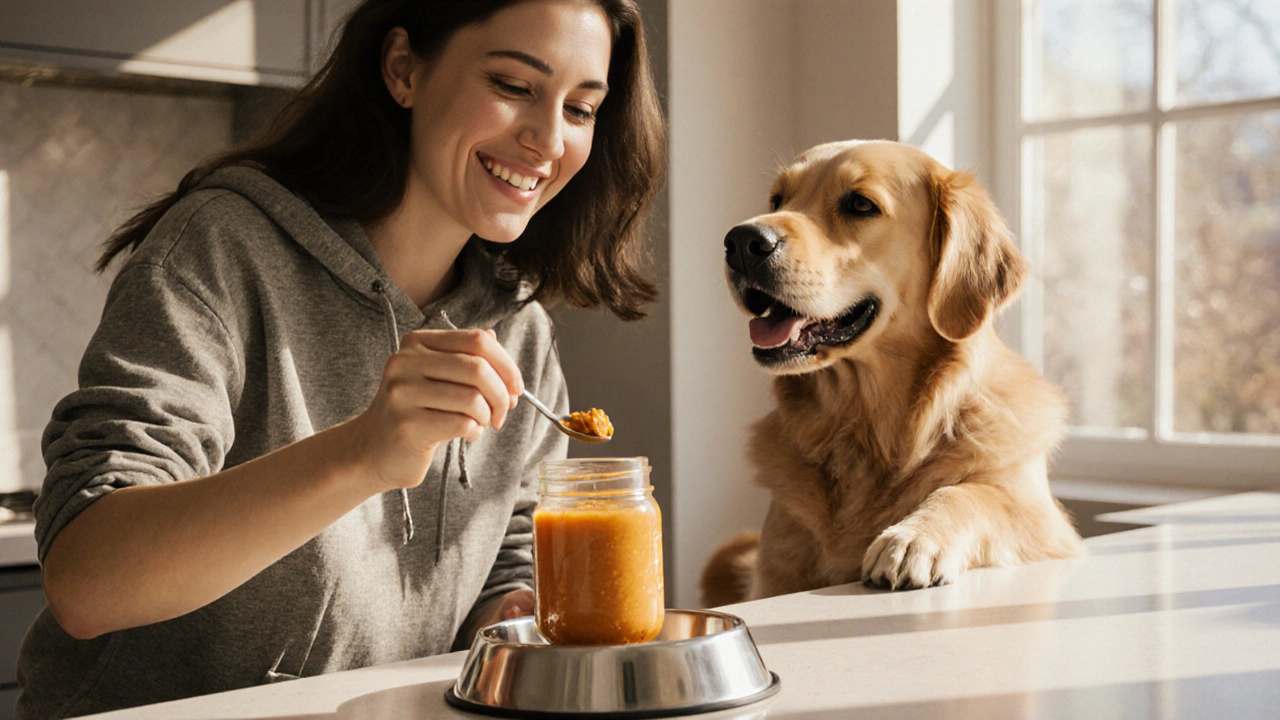Pumpkin Side Effects in Dogs
When you hear about pumpkin side effects dogs, the possible negative reactions a dog might have after eating pumpkin. Also known as pumpkin intolerance in canines, it shows up whenever owners add this natural food to a pet diet without checking the limits. Understanding the why, what and how helps you keep your dog safe while still enjoying the benefits pumpkin can bring.
What Pumpkin Actually Is
Pumpkin, a fiber‑rich fruit often used in canine diets for its gentle laxative effect and vitamin A content is popular because it’s cheap, easy to find, and rarely causes severe allergic reactions. The plant’s soluble fiber can bulk up stool and soothe mild diarrhea, while the beta‑carotene supports skin and coat health. However, the same fiber that helps digestion can also ferment in the gut, leading to gas, bloating, or even constipation if you give too much at once.
Side effects usually appear as gastrointestinal upset. Gastrointestinal upset, symptoms like loose stools, vomiting, or abdominal pain that follow a diet change is the first sign most owners notice. A dog may have a sudden increase in flatulence, a softer or firmer stool than usual, or an unwillingness to eat. In rare cases, a dog can develop an allergic reaction that shows up as itching, ear infections, or hives. Spotting these signs early can prevent a minor issue from becoming a serious health concern.
Amount matters more than anything else. The general rule is one tablespoon of cooked, pure pumpkin per 10 pounds of body weight, mixed into the regular meal. For a 20‑lb Labrador, that means roughly two tablespoons a day. Splitting the serving across two meals can reduce the chance of a sudden fiber overload. Larger breeds can handle slightly more, but the goal is to keep the total daily fiber under about 5 grams per kilogram of body weight. Over‑feeding can tip the balance toward constipation, especially if the dog isn’t drinking enough water.
Dogs with pre‑existing conditions are extra vulnerable. Animals with pancreatitis, diabetes, or obesity already have a strained digestive system, so adding extra fiber can worsen blood sugar swings or cause painful abdominal cramping. Senior dogs often have slower gut motility, meaning pumpkin may sit longer in the intestines and ferment more, increasing gas production. If your pet falls into any of these categories, start with half the suggested dose and watch the stool closely for any changes.
When in doubt, involve a professional. Veterinarian, a qualified animal health expert who can assess diet, run blood work, and recommend safe supplements should be the first point of contact if your dog shows persistent diarrhea, vomiting, or any sign of an allergic reaction. A vet can run a simple stool test to rule out parasites, check blood glucose levels in diabetic dogs, and advise on appropriate fiber sources. They might suggest swapping pumpkin for canned pumpkin puree with no added sugars or spices, or they could recommend a commercial fiber supplement that’s easier to dose.
All these factors—pumpkin composition, dosage timing, existing health issues, and professional guidance—create a web of considerations that determine whether pumpkin will help or hurt your dog. Our collection below covers related topics like proper feeding schedules, safe travel with pets, and grooming tips that all tie back to keeping your canine healthy and happy. Dive into the articles to see how you can blend nutrition, routine care, and expert advice into a balanced plan for your four‑legged friend.
Posted By Bryndle Redding On 17 Oct 2025 Comments (0)
Pumpkin Side Effects in Dogs: What Every Owner Should Know
Learn the safe way to give pumpkin to dogs, spot side effects, and know which pets need extra caution. A practical guide for pet owners.
READ MORE